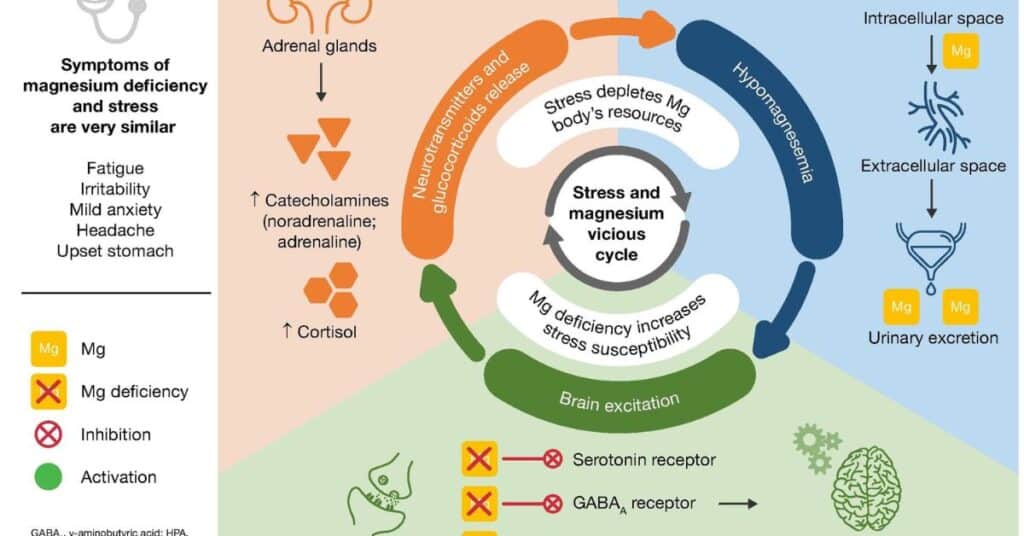magnesium rods health hazards list are commonly used in various industrial applications, including construction, automotive manufacturing, and even in some medical devices. While magnesium is known for its lightweight and corrosion-resistant properties, it also poses several health hazards when mishandled or improperly used. Understanding these hazards is crucial for anyone working with or around magnesium rods to ensure safety and prevent adverse health effects. This article outlines the potential health risks associated with magnesium rods and offers guidance on safe handling practices.
Health Hazards Associated with Magnesium Rods
The health hazards related to magnesium rods primarily stem from exposure to magnesium dust, fumes, and the chemical properties of magnesium itself. Key hazards include:
- Respiratory Issues: Inhalation of magnesium dust or fumes can irritate the respiratory tract, leading to symptoms such as coughing, wheezing, or shortness of breath.
- Skin Irritation: Direct contact with magnesium can cause skin irritation or burns, particularly if the metal is in a finely divided form.
- Eye Damage: Exposure to magnesium dust can result in eye irritation or damage, necessitating immediate washing and medical attention.
- Metal Fume Fever: A flu-like illness known as metal fume fever can occur after inhaling magnesium oxide fumes. Symptoms include fever, chills, headache, and muscle aches.
Recognizing these hazards is essential for implementing effective safety measures in workplaces that utilize magnesium rods.
also read this: What hiking companies don’t make their shoes in china
Acute Health Effects of Magnesium Exposure
Acute exposure to magnesium can lead to immediate health effects that may require medical attention. Some of the acute effects include:
- Irritation of Mucous Membranes: Inhalation of magnesium dust can irritate the mucous membranes of the nose and throat, causing discomfort and respiratory symptoms.
- Chemical Burns: Contact with molten magnesium can cause severe burns due to its high temperature and reactivity.
- Gastrointestinal Distress: Ingesting magnesium compounds may lead to nausea, vomiting, and abdominal pain.
These acute effects highlight the importance of using appropriate personal protective equipment (PPE) when handling magnesium rods.
also read this: What Oils are in TWC?
Chronic Health Effects of Magnesium Exposure

Chronic exposure to magnesium can result in long-term health issues that may not manifest immediately. Potential chronic effects include:
- Respiratory Conditions: Long-term inhalation of magnesium dust may lead to chronic respiratory conditions such as bronchitis or asthma.
- Dermatitis: Repeated skin exposure can cause chronic dermatitis or allergic reactions.
- Potential Carcinogenic Effects: While current research does not classify magnesium as a carcinogen, prolonged exposure to certain forms or compounds may pose risks that require further investigation.
Understanding these chronic effects emphasizes the need for ongoing monitoring and preventive measures in workplaces handling magnesium.
Safety Measures for Handling Magnesium Rods
To mitigate the health hazards associated with magnesium rods, several safety measures should be implemented:
- Personal Protective Equipment (PPE): Workers should wear appropriate PPE, including gloves, goggles, and respirators when necessary.
- Ventilation Systems: Ensure proper ventilation in work areas to minimize inhalation risks associated with dust and fumes.
- Dust Control Measures: Implement dust control strategies such as wetting down surfaces or using vacuum systems to reduce airborne particles.
- Training Programs: Regular training on safe handling practices for employees can help raise awareness about potential hazards and proper emergency procedures.
By adopting these safety measures, workplaces can significantly reduce the risks associated with working with magnesium rods.
Emergency Response Procedures
In case of an incident involving magnesium rods, having a clear emergency response plan is critical. Key elements of an effective emergency response include:
- Immediate Medical Attention: Ensure that workers know how to seek immediate medical help in case of exposure or injury.
- First Aid Measures: Train employees on first aid procedures for burns or respiratory distress caused by magnesium exposure.
- Emergency Contact Information: Maintain a list of emergency contacts readily available in case of an incident.
Having a well-defined emergency response plan ensures that employees are prepared to act quickly and effectively in emergencies.
Regulatory Guidelines for Magnesium Safety
Various regulatory agencies provide guidelines for safely handling hazardous materials like magnesium. Familiarizing oneself with these regulations is essential:
- Occupational Safety and Health Administration (OSHA): OSHA sets standards for workplace safety regarding hazardous materials. Employers must comply with these regulations to ensure worker safety.
- National Institute for Occupational Safety and Health (NIOSH): NIOSH provides recommendations on exposure limits and safety practices for handling hazardous substances like magnesium.
- Material Safety Data Sheets (MSDS): Always refer to the MSDS for specific information on handling, storage, and emergency procedures related to magnesium products.
Adhering to these guidelines helps ensure a safe working environment when dealing with magnesium rods.
Environmental Considerations
magnesium rods health hazards list In addition to health hazards posed to individuals, the use of magnesium rods also raises environmental concerns. Key considerations include:
- Waste Disposal: Proper disposal methods must be followed for any waste generated from working with magnesium rods. This includes recycling whenever possible.
- Pollution Prevention: Implementing practices that minimize dust generation during cutting or grinding processes helps protect air quality.
- Chemical Reactions: Magnesium reacts vigorously with water; thus, it should be stored away from moisture sources to prevent hazardous reactions.
By considering environmental impacts alongside human health risks, organizations can adopt more sustainable practices when using magnesium rods.
Best Practices for Safe Handling
To ensure safe handling of magnesium rods in various applications, consider implementing best practices such as:
- Conduct Regular Training: Provide ongoing training sessions focusing on safe handling techniques and emergency response protocols related to magnesium use.
- Utilize Proper Storage Techniques: Store magnesium rods in dry locations away from incompatible materials like water or oxidizers.
- Maintain Equipment Regularly: Ensure that tools used for cutting or shaping magnesium are well-maintained to prevent accidents caused by malfunctioning equipment.
- Implement Signage: Use clear signage indicating hazardous areas where magnesium is handled or stored.
By following these best practices, workplaces can create a safer environment for employees working with magnesium rods.
Conclusion
magnesium rods health hazards list offer numerous benefits across various industries due to their lightweight and corrosion-resistant properties, they also present significant health hazards that must be managed effectively. Understanding both acute and chronic health effects associated with exposure is crucial for anyone working with this material.
By implementing appropriate safety measures, adhering to regulatory guidelines, and fostering a culture of safety through training and awareness programs, organizations can mitigate risks associated with handling magnesium rods. Prioritizing safety not only protects workers but also contributes positively toward overall workplace well-being.

Fashioneleganto, curated by fashion enthusiast Brook, is your go-to destination for chic and elegant styles. Discover the latest trends, timeless classics, and expert styling tips for every occasion.











